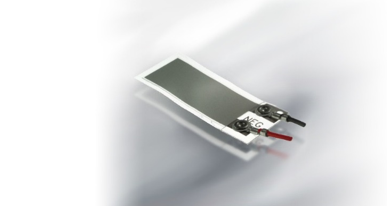IMPLANTABLE SENSORS
Implantable sensors need to be small, lightweight, and compatible with body mass as well as require very little power to operate. Most importantly, they must not decay over time. Since they are Class III medical devices, they automatically require FDA approval. Implantable sensors typically require two to four years for development and implementation before moving on to production. Generally, they are more expensive and require a specialist to surgically implant them. The power requirement is one of the major challenges for implantable sensors. Sensors that can function with no power are ideal, but these are few and rare in the market. Piezoelectric polymer sensors are well suited for vibration detection since they are small, reliable, durable, and require no power. Such sensors can be used in pacemakers that monitor activities of the patient.

This Piezo sensor is in the shape of a tiny cantilever beam with weight attached on one end that flops with body movement. Every time the patient moves, the sensor generates a signal. Using a pacemaker as an example, the pacemaker then receives this signal and makes the heart beat at the desired pace. The sensor can differentiate between various activities such as walking, running, or other physical activities. For instance, if the patient is resting, the signal will be zero and the pacemaker will make the heart beat at a minimal rate. In this way, the sensor signal is proportional to the level of activity. A miniature Piezo film vibration sensor is 15/100 of an inch in length including the pacemaker which houses it. Implanted sensors can also be powered by external sources. For example, a Radio Frequency (RF) energy wand when placed near a sensor located inside the body will power the sensor up. The sensor will then record patient measurements, transmit the data back to the wand via RF link, and return to hibernation. Another example of using an implanted sensor in this way is that of a post abdominal aortic aneurysm procedure where an implanted sensor can monitor the pressure leaks at the surgical location.
Article Source: https://spectrum.ieee.org/biomedical/devices/choosing-sensors-for-medical-applications
